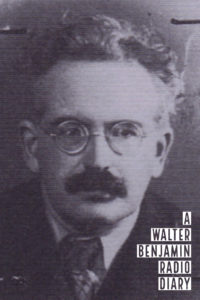 In July of 1930 Walter Benjamin broadcast a radio program titled “A Visit to the Brass Works.” The talk, given at Radio Berlin, focused on the impossibility of the task he had assigned himself: adequately describing the Hirsch-Kupfer Brass Works of Germany to his audience.
In July of 1930 Walter Benjamin broadcast a radio program titled “A Visit to the Brass Works.” The talk, given at Radio Berlin, focused on the impossibility of the task he had assigned himself: adequately describing the Hirsch-Kupfer Brass Works of Germany to his audience.
Who, Benjamin worried out loud, would want to listen to such a monologue? To any listener who had not already turned off his radio, “give me just a few minutes more,” he begged.
But what they heard for about 20 minutes were Benjamin’s doubts that he could pull this performance off.
“The writer or poet has yet to be born,” he confessed, “who is capable of describing a three-high rolling mill or a rolling shear or an extrusion press or a high performance cold rolling mill so that others can imagine them.”
And as difficult as it was to describe these machines from the outside, how could Benjamin explain them from the inside? He could list the raw materials going into the technology, he noted. He could describe the finished products coming out as well. “But you would not see how it was done, and what with the deafening racket of the machines at work, the rolling cranes, the dropping of loads, no one could explain it to you either.”
Then there were all the other questions he could not address for long. “What is brass?” he impatiently asked his listeners. Where did the power come from to fuel the plant’s operations? Who exactly works at the Brass Works? What is its history? To all these questions Benjamin offered detailed answers, all the while apologizing to his listeners for not doing better.
But even if they visited the plant themselves, he warned, they might not even be able to figure the place out. Especially if they had not gotten a good night’s sleep beforehand:
“That is necessary because otherwise you would stumble over the tracks and workpieces that cover the floor of the hall; you would have no eye for the work and instead would constantly look up in case one of the ton blocks, which are being swung through the air by cranes, was about to fall on your head; you would see only an impenetrable linkage, a network that seems to flicker, and not the clear, sharp division of the hall, where every worker has his specific place and every machine has, in a way, its own small office, from which the manager, with his eye on the automatic electricity, pressure, and temperature gauges, directs it.”
Thus did Benjamin’s fans receive an intimate, detailed portrait of the Hirsch-Kupfer works, the painter all the while insisting on the inadequacy of his canvas.
This is the fifth installation of my Walter Benjamin radio diary.



